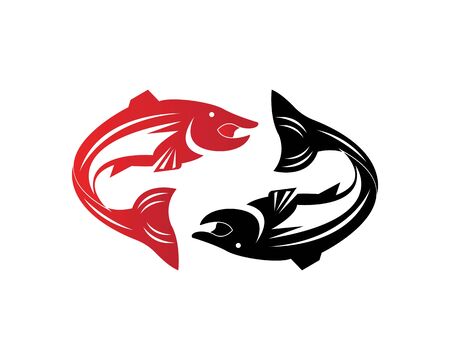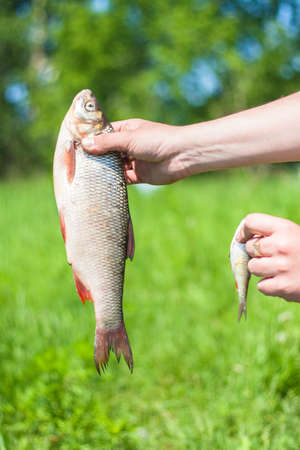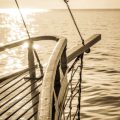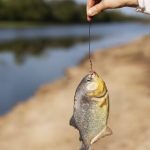1. Understanding Native and Invasive Species
As an angler in the U.S., its important to know the difference between native and invasive aquatic species. This knowledge helps you make responsible decisions while fishing and enjoying Americas waters.
What Are Native Species?
Native species are plants, fish, or other animals that have lived in a specific region for thousands of years. They have adapted to their local environment and play a key role in keeping natural ecosystems balanced. For example, the Largemouth Bass is native to much of the eastern United States and is a favorite target for many American anglers.
What Are Invasive Species?
Invasive species are non-native organisms introduced—often accidentally—to new environments where they don’t belong. They can spread quickly, outcompete native species for food and space, and disrupt entire ecosystems. The Zebra Mussel, originally from Eurasia, is a notorious example found in many American lakes and rivers.
Main Differences Between Native and Invasive Species
| Category | Native Species | Invasive Species |
|---|---|---|
| Origin | Belong naturally to the area | Introduced from outside regions |
| Impact on Ecosystem | Maintain balance in ecosystem | Disrupt natural balance; often harmful |
| Examples Anglers Encounter | Largemouth Bass, Bluegill, Channel Catfish | Zebra Mussel, Northern Snakehead, Asian Carp |
| Management Needs | Conservation & protection | Control & prevention of spread |
Why Should Anglers Care?
If you’re out on a lake or river, you might come across both native favorites like Bluegill Sunfish and problematic invaders like the Northern Snakehead. Understanding these differences is more than just trivia—it’s about protecting your favorite fishing spots for the future. By knowing which fish belong and which ones are troublemakers, you help keep America’s waterways healthy for everyone.
A Few Common Examples:
- Largemouth Bass (Native): Thrives in warm freshwater across much of the U.S.
- Zebra Mussel (Invasive): Clings to boats and infrastructure, clogging pipes and crowding out native mussels.
- Northern Snakehead (Invasive): Aggressive predator known for devastating local fish populations in some regions.
- Brook Trout (Native): Iconic cold-water fish in Appalachian streams.
- Asian Carp (Invasive): Consumes massive amounts of plankton, threatening food sources for native fish.
This basic understanding sets the stage for responsible angling—helping you enjoy your time outdoors while being a good steward of Americas natural resources.
2. The Impact of Invasive Species on Local Ecosystems
How Invasive Species Disrupt Waterways
When anglers talk about a good fishing spot, they often think about clear water, healthy fish, and natural beauty. But invasive species can throw a wrench into this picture. These are plants, fish, or other organisms that are not native to a specific area. Once they show up, they spread fast and compete with local wildlife for food, space, and resources. This disrupts the natural balance of rivers, lakes, and streams across the U.S.
Harm to Native Fish Populations
One of the biggest problems caused by invasive species is the decline of native fish. For example, when zebra mussels or Asian carp take over a waterway, they change the food web. Native fish like bass, trout, and sunfish struggle to find enough food or safe places to spawn. Some invasives even eat the eggs or young of local fish, causing their numbers to drop.
Examples: Native vs. Invasive Species in U.S. Waters
| Native Species | Invasive Species | Main Impact |
|---|---|---|
| Largemouth Bass | Northern Snakehead | Snakeheads outcompete bass for prey and space; can even eat young bass. |
| Brook Trout | Brown Trout (introduced) | Brown trout outcompete brook trout for habitat and food sources. |
| Mussels (local types) | Zebra Mussel | Zebra mussels filter out plankton needed by native mussels and fish. |
| Sunfish (Bluegill) | Asian Carp | Asian carp consume huge amounts of plankton, starving out smaller native fish. |
The Ripple Effect on Ecosystems
The trouble doesn’t stop with just one or two fish species. When an invasive species takes hold, it affects everything—plants along the shorelines, insects in the water, birds that feed on fish, and even water quality itself. For instance, too many invasive plants like hydrilla can choke waterways so badly that boats can’t pass through and oxygen levels drop for all aquatic life.
Why Anglers Should Care
If you love fishing in America’s lakes and rivers, protecting native species is part of keeping those waters healthy for generations to come. Understanding how invasives upset the balance helps anglers make responsible choices—like cleaning gear before moving between lakes or reporting new sightings—to keep our wild places wild.

3. How Invasive Species Spread: An Angler’s Perspective
Unintentional Travelers: How Invasives Hitch a Ride
If you love fishing, you know how easy it is to move from one lake, river, or pond to another. What many anglers don’t realize is that unwanted guests—like invasive plants, fish, and tiny organisms—can tag along with your gear and boat. These hitchhikers can disrupt local habitats, outcompete native species, and cause headaches for everyone who enjoys the outdoors.
Common Ways Invasive Species Spread During Fishing Activities
| How It Happens | Examples | What Gets Spread |
|---|---|---|
| On Fishing Gear | Rods, reels, nets, waders, tackle boxes | Plant fragments (like Eurasian watermilfoil), fish eggs, zebra mussel larvae |
| In Live Bait | Unused live bait dumped into water | Bait species (shiners, worms) introducing non-native diseases or fish |
| With Boats & Trailers | Plants stuck on trailers or motors; water in bilges/live wells | Aquatic plants (hydrilla), tiny animals (spiny water fleas), mussel larvae |
| Clothing & Footwear | Mud and plant matter on boots and waders moving between waters | Seeds of invasive plants, microscopic organisms |
| Aquarium Dumping (Indirect) | Anglers dumping unwanted pet fish or plants into local waters | Non-native fish species, exotic aquatic plants like water hyacinth |
The Chain Reaction: One Trip Can Make a Difference
It only takes a single plant fragment or a few invisible larvae to start an invasion. For example, zebra mussels can cling to a boat hull or hide in standing water inside your live well. When you launch at a new location without cleaning up first, those mussels get a fresh start in unfamiliar waters. Likewise, aquatic plants tangled around propellers or fishing nets can quickly take root somewhere new.
The Role of Bait Buckets and Live Wells
Bait buckets and live wells are often overlooked. If you move water or bait from one spot to another, you might be carrying more than just minnows—you could be spreading parasites or larval stages of invasive fish. Always empty your bait bucket on dry land far from any body of water if you have leftover bait.
4. Legal and Ethical Responsibilities for U.S. Anglers
Understanding the Rules: Federal, State, and Local Regulations
If you’re fishing anywhere in the United States, you need to know that laws can change from one lake or river to the next. The main goal? Stop invasive species before they take over native habitats. Here’s how the rules break down:
| Level | Examples of Regulations | What Anglers Should Do |
|---|---|---|
| Federal | Lacey Act (prohibits transport of certain invasive species across state lines), Clean Water Act (protects waterways from pollution) | Never move fish, plants, or water between bodies of water; report sightings of invasive species to authorities |
| State | Specific lists of banned species, boat inspection requirements, cleaning protocols for gear and boats | Know your state’s rules; always clean, drain, and dry your boat and gear; check for local advisories before fishing |
| Local | Lake- or river-specific regulations, special disposal rules for bait and fish remains, restricted access zones | Follow posted signs and local guidelines; use only approved bait; dispose of waste properly in designated areas |
The Unwritten Code: Ethical Norms Every Angler Should Live By
Laws aren’t the only thing keeping our waters healthy—there’s also an outdoor code that responsible anglers follow. Here’s what it looks like in practice:
- Respect Native Species: Always release native fish unharmed whenever possible.
- Avoid Spreading Invaders: Never dump leftover bait or aquarium pets into lakes or rivers.
- Educate Your Crew: If you see someone breaking the rules—even by accident—let them know why it matters.
- Lead by Example: Make it a habit to clean all your gear after every trip, even if nobody’s watching.
- Report Problems: If you spot an invasive plant or animal, let local wildlife officials know right away.
Your Quick Checklist Before Hitting the Water
- Check federal, state, and local rules before each trip
- Clean, drain, and dry all equipment—boats, waders, nets—after use
- Avoid using non-native bait unless specifically allowed
- Dispose of unwanted bait and fish parts in trash cans—not in the water!
- If unsure about a regulation, ask a ranger or look up info online before you go fishing
The Bottom Line: Know the Rules—And Do What’s Right
The best anglers aren’t just good at catching fish—they’re stewards of America’s wild places. By understanding both the legal requirements and the ethical expectations on our waterways, you help keep native species thriving for generations to come.
5. Best Practices for Preventing the Spread
Clean, Drain, Dry: The Golden Rule for Anglers
If you’re heading out to your favorite lake or river, remember that your gear and boat can carry more than just memories—they can also transport invasive species. Follow the “Clean, Drain, Dry” routine every time you move between waters.
| Step | What to Do | Why It Matters |
|---|---|---|
| Clean | Scrub boots, waders, rods, nets, and boats with a stiff brush. Remove all mud, plants, and visible debris. | Prevents hitchhiking invasive species from spreading to new locations. |
| Drain | Empty live wells, bait buckets, bilges, and any other water-holding compartments before leaving the launch site. | Avoids transporting microscopic invaders like zebra mussel larvae or plant fragments. |
| Dry | Let all gear and boats dry completely for at least 5 days or use towels if you need to use them sooner. | Most aquatic invaders can’t survive without moisture—drying kills them off. |
Bait Handling: Respect Local Rules and Ecosystems
- Buy Locally: Always purchase bait from local shops to ensure it’s native or certified disease-free.
- No Dumping: Never release leftover bait into the water or on shore—even if it looks harmless. Dispose of unused bait in trash bins away from water sources.
- Bait Buckets: Clean and disinfect buckets after each trip to avoid cross-contamination between waterways.
Gear Checklist Before Hitting the Road
- Nets & Waders: Check seams for trapped vegetation or mud.
- Tackle Boxes: Remove any bits of plant matter or dirt before packing up.
- Canoes/Kayaks: Flip over and inspect hulls and storage spaces for hidden critters or seeds.
- Trailers & Tires: Rinse off any stuck-on debris—plants can easily cling here during transport.
Simplified Routine for Every Trip
| Action | When to Do It |
|---|---|
| Inspect & Remove Debris | Before leaving the water access site |
| Drain All Water Sources | Immediately after boating/fishing session ends |
| Thorough Cleaning & Drying | At home or before next outing—especially when switching lakes/rivers |
| Bait Disposal & Gear Check | End of every fishing trip |
Your Role in Conservation Starts at the Ramp
The fight against invasive species is hands-on—literally. These best practices are simple habits that every U.S. angler can adopt to help protect our favorite fishing spots for generations to come. Make them part of your outdoor routine every time you hit the water.
6. Community Engagement and Reporting
Anglers have a unique opportunity to make a real impact on America’s lakes, rivers, and streams by getting involved in community science and conservation. By taking action together, we can help protect native fish and stop invasive species from spreading. Here’s how you can get involved:
Get Involved in Citizen Science
Citizen science projects let everyday anglers collect valuable data while enjoying their favorite hobby. Many organizations, like local fish and wildlife agencies or non-profits, run programs where you can report what you catch, help track fish populations, or even monitor water quality. Your observations add up, giving scientists and managers the info they need to make smart decisions.
Popular Citizen Science Programs for U.S. Anglers
| Program Name | How You Can Help | Where to Learn More |
|---|---|---|
| iNaturalist | Upload photos of plants and animals you see while fishing | Visit iNaturalist |
| USGS Nonindigenous Aquatic Species (NAS) | Report sightings of unusual or invasive aquatic species | USGS NAS Site |
| State Fish & Wildlife Volunteer Programs | Assist with fish counts, habitat restoration, and educational outreach | Your state agency website |
Support Local Conservation Efforts
Getting involved locally makes a big difference. Join a river cleanup day, volunteer for habitat restoration projects, or participate in workshops about native species protection. Many fishing clubs and outdoor groups organize these activities throughout the year—it’s a great way to meet other anglers who care about healthy waterways.
The Importance of Reporting Invasive Species Sightings
If you spot something unusual—like a new plant growing along the shoreline or a strange fish in your favorite lake—it could be an invasive species. Reporting these sightings quickly is key to stopping them before they become a bigger problem. Most states have hotlines or online forms where you can send details and photos.
What To Report:
- Unusual fish, plants, snails, or other aquatic life that don’t belong in your area
- Large numbers of dead or dying native species without obvious cause
- Any suspicious changes in water color or clarity linked to possible invasives
Your eyes on the water are one of the best defenses against invasives—don’t hesitate to reach out if you notice something off during your next trip.


